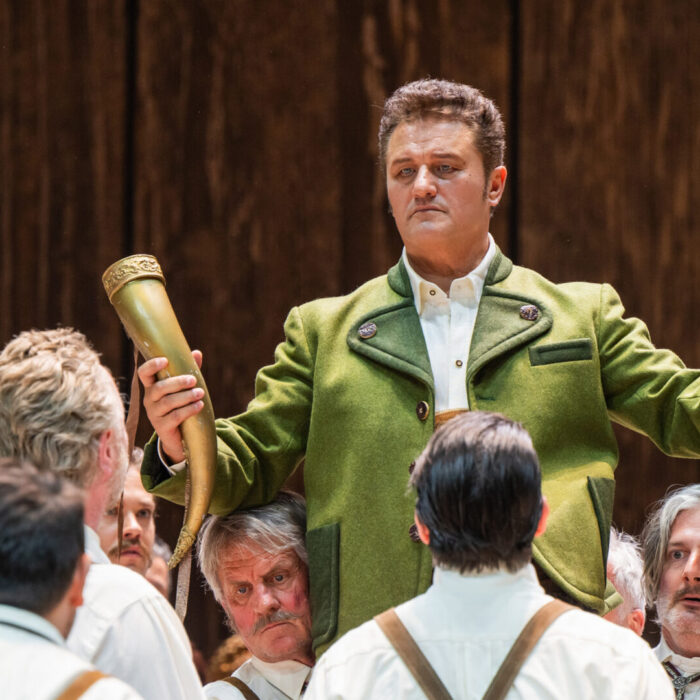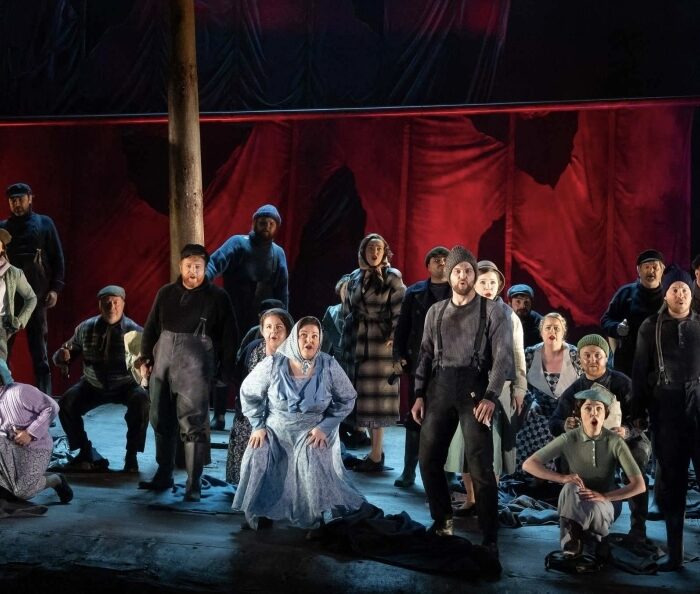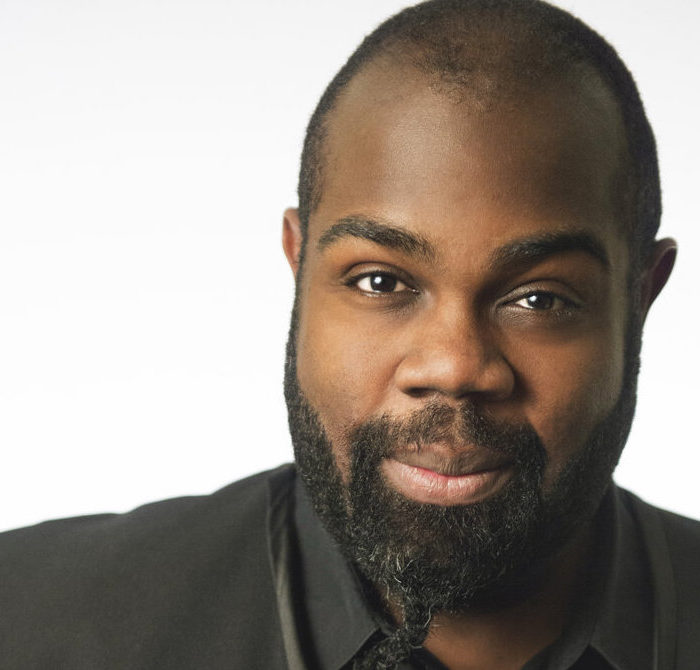
Wexford Festival Opera 2019 Review: The Veiled Prophet of Khorassan
A Committed Performance Makes A Case For Stanford’s Forgotten First Opera
By Alan NeilsonIrish composer Charles Villiers Stanford (1852 – 1924) is a largely forgotten name in the opera world, being better remembered for his church and orchestral music. Occasionally, productions of his operas do crop up, but they tend to be performed by small-scale companies operating on the fringes. Recordings of excerpts from his operas do exist, and a live recording of his final opera, “The Travelling Companion” was made last year, but otherwise his operas remain unknown to the vast majority of the opera-going public.
However, this year’s Wexford Festival Opera, known for its programming of rare and unusual works, presented a concert performance of Stanford’s first opera, “The Veiled Prophet of Khorassan.”
A Tough Work To Stage
Written in 1879, Stanford struggled to find a British company willing to stage the work, and had to wait two years before finding a theatre willing to risk a staging, which happened to be in the German city of Hannover. So it was that the premiere of “The Veiled Prophet” took place in Germany, in a German translation, where it received three performances.
After revising the work, Stanford eventually managed to secure one performance at Covent Garden in 1893, this time in Italian! There have been no further recorded performances; Wexford’s presentation marked the opera’s first performance in over 120 years, and the first time it has ever been heard in its original language of English.
Its libretto, written by William Barclay Squire, is based on “Lalla Rookh” by the Irish poet Thomas Moore. Its narrative is situated in Khorassan, and centered around the charismatic prophet Mokanna, who keeps his face hidden from his followers by a veil. He is fundamentally evil, but is able to seduce his followers into obeying his commands. Having come under attack from the Caliph Mahadi, and seeing that he will be defeated, Mokanna, for no other reason other than that he can, orders his followers to drink with him. Unbeknown to them, the drink is poisoned, and they are all killed.
There is also a love interest in the form of Azim and Zelica. Mokanna also desires Zelica and allows her to see what lies behind his veil, which much to her horror, reveals him to be a demon. In the final scene, he also offers Zelica the poisoned drink, wishing her dead. Fortunately, Azim arrives and manages to protect Zelica, before Mokanna, rather than accepting capture, commits suicide, by stabbing himself to death.
It is an opera on a grand scale, with large choral sections, big roles, spectacle and even a ballet scene. Its similarity to French Grand Opera is clear, and many commentators have commented on Stanford’s debt to Meyerbeer, although this should not necessarily be seen as praise, for it is the negative aspects of Meyerbeer’s work which are alluded to, namely its eclecticism, large-scale posturing and preference for showy spectacle and attractive melody over dramatic depth.
Listening to the concert performance, there is some sense of truth in this. However, two points should be borne in mind. Firstly, a concert performance is a truncated version; we can try to imagine the impact of the music if the work were staged, but we cannot know with certainty what that will be.
Secondly, Meyerbeer himself has arguably been treated very badly, and has been given an undeserved reputation, in no small part thanks to Wagner’s opinions and that of his followers. Moreover, this was Stanford’s first attempt at writing an opera; he went on to write another eight, of which one or two have been well received.
In the pit, conducting the Wexford Festival Opera Orchestra was David Brophy. Managing to keep the large musical forces together, he created an excellent reading, in which he energetically drove the drama forward and successfully contrasted the large scale choral and orchestral pieces with the small-scale almost chamber music-like qualities of other sections. Listening to the playing one could not but be impressed with Stanford’s gift for melody and the richness of his orchestration. It was also interesting to note that Wagnerian influences were clearly embedded within the score, not that this should have been a surprise given his strong advocacy of the composer and the fact that he had been to Bayreuth and heard Wagner’s music only a few years before he wrote the score.
Mokanna & His Rivals
Mokanna was played by young Polish baritone Simon Mechlinski. He provided a forceful reading, accenting and coloring the vocal line skillfully to bring out the power and charisma of the character. In Act three he unleashed his hatred in a well-delivered aria, capturing Mokanna’s malice and desire for vengeance.
Mechlinski has a strong, flexible voice, which he uses with intelligence. He did, however, struggle with the bottom end of his lower register, which was not sufficiently robust, lacking the necessary strength, coloring and fullness of sound. It did little, however, to compromise what was otherwise an expressively satisfying and well-sung performance.
Soprano Sinead Campbell-Wallace was parted as Zelica, the focus of Mokanna’s attentions. She was truly excellent in the role and delivered an emotionally expressive performance. Campbell-Wallace possesses an attractive, agile voice, which blooms as it climbs in the upper register. The quality of her phrasing was formidable; clothing her words with well-placed accents, colorful and dynamic flashes enabled her to create a passionate and emotional portrait. So many examples could be cited to illustrate her talent, such as the Act one lament, in which she captured the anguish and fears of seeing Azim sent into battle.
Fatima, the personal slave of Zelica, was parted by soprano Mairead Buicke. Although it is a smaller role, she was equally effective and no less impressive, singing the most famous piece from the opera, “There’s a bower of roses;” she delivered this nostalgic air with great nuance and depth. However, it was her duet with Zelica in Act three, “O joy, O delight,” which particularly delighted; Buicke’s soprano has a sharper, steelier quality than Wallace-Campbell’s, creating an interesting contrast between the two voices.
Tenor Gavin Ring was cast as Azim. Required to run through a whole range of emotions, it is a role demanding versatility, and Ring certainly was not lacking. He possesses a wonderfully rich voice, with substantial weight in his lower and middle registers, which he used to spin out long lines of beauty. Although the upper register did sound a little thin on occasions, it became less of a problem as the evening progressed. It is also an agile voice, which he projected well. More importantly, however, was that Ring used these strengths to develop a well-defined character, whose passionate responses to the situations he faced brought energy and excitement to his presentation.
Equally Impressive
Abdullah, Mokanna’s closest disciple, was played by bass John Molloy, whose lyrical qualities impressed, notably so in his sympathetically rendered Act two “hunting aria,” in which the attractiveness and agility of his voice were clearly displayed. Molloy has a strong, well-focused sound, which he employed consistently and with sensitivity to the text.
In the role of the Caliph Mahadi was bass Thomas D Hopkinson, who skillfully crafting his lines to bring the role alive in a confident and solid performance.
Tenor Dominik Felix stepped out of chorus to perform the small, but musically engaging part of the Watchman. Singing with formidable power, he gave an excellent account, and won the audience’s approval. Yet, at the final curtain call, he wasn’t given the opportunity to step forward like all the other soloists, a disappointing decision to be sure.
“The Veiled Prophet” is an opera on a grand scale, and as such it means a large role for the chorus. The Wexford Festival Opera Chorus under Chorus Master Errol Girdlestone engaged fully with the task and produced a stunning performance oozing with quality and beauty. When singing in full voice, it filled the auditorium with a sound that set the hair tingling.
The stage was set with the chorus across the middle and back of the stage with the soloists, entering and exiting in front. Videographer Robert Recchia provided a simple but effective backdrop to the performance, in which the stage descriptions and directions were projected, alongside arabic designs. It worked exceptionally well in providing a context for the singing. The producer for the performance was Una Hunt, whose advocacy and research did much to make this concert performance possible.
As a concert performance, Stanford’s first opera certainly had more than enough to sustain interest from the audience and can undoubtedly go down as a success, which, in no small part, was the result of the clearly expressed commitment from everyone involved. Whether or not it would work as a staged performance, however, where expectations are very different, is another matter. But based on this performance alone, I suggest that it is certainly worth a try.



